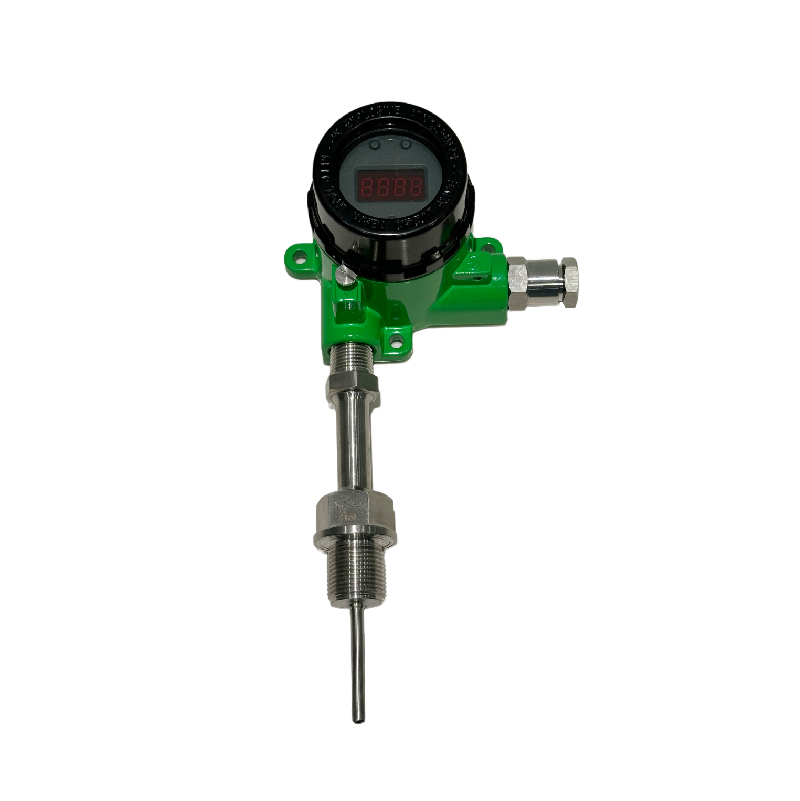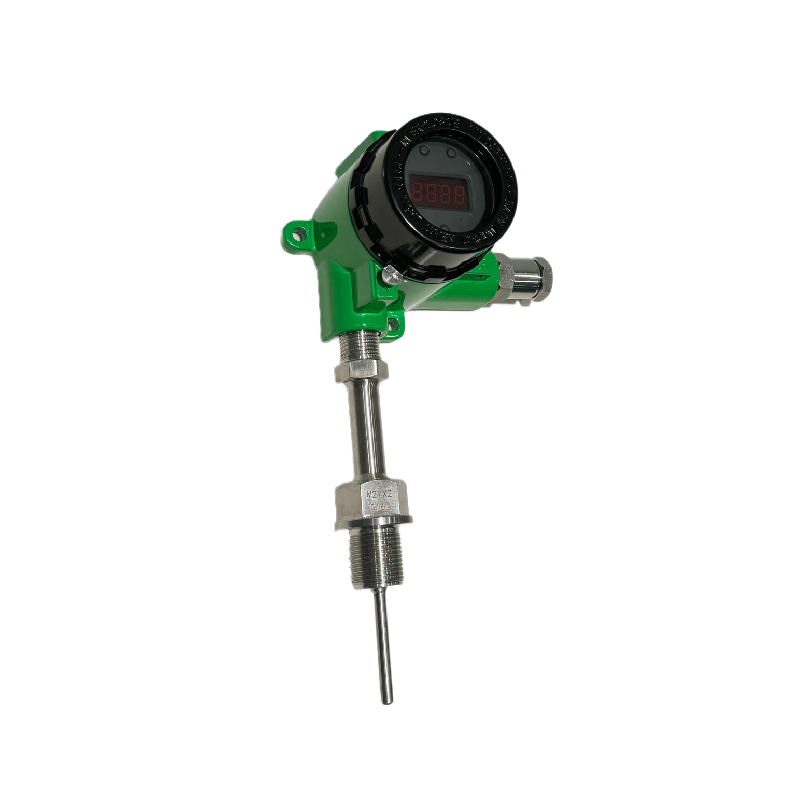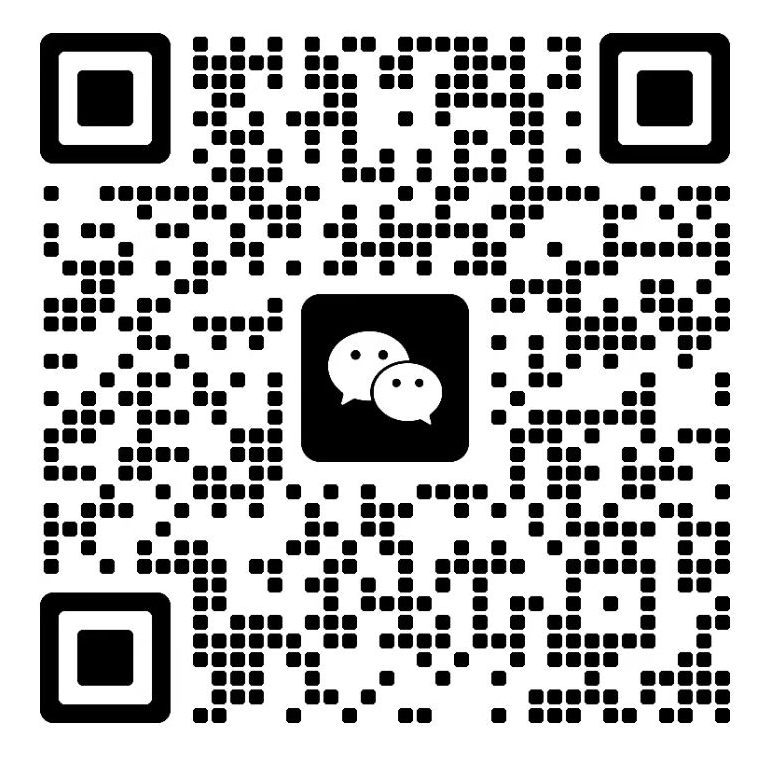Temperature transmitters play a crucial role in industrial production, but their self-heating effect can have a certain impact on measurement results. As a resistor, a temperature transmitter will inevitably generate heat when current passes through it. This is determined by the characteristic of the resistor, where the flow of current causes energy loss, which is then converted into heat energy.
The main reasons for the self-heating effect are as follows: Firstly, the resistive characteristic of the temperature transmitter causes joule heating when current passes through. Secondly, in low-temperature measurements, such as with germanium resistance thermometers and carbon resistance thermometers, which have a negative temperature coefficient of resistance, the resistance increases as the temperature decreases. To measure the resistance accurately, a current must be passed, which easily leads to self-heating. Moreover, the differences in materials and structures among different types of temperature transmitters, such as thermal resistors, thermocouples, and thermistors, also affect the degree of self-heating.
The self-heating effect can impact system measurements in several ways. On one hand, self-heating raises the temperature of the temperature transmitter itself, resulting in a deviation between the measured temperature and the actual ambient temperature, thus affecting the accuracy of the measurement. On the other hand, the self-heating effect may impact the response time and stability of the temperature transmitter. For example, in terms of thermal response time, self-heating may slow down the temperature transmitter’s response to temperature changes, affecting the system’s real-time performance. Additionally, over time, the self-heating effect may lead to a decline in the performance of the temperature transmitter, reducing its long-term stability.
What are the methods to address the self-heating effect? Let’s continue to explore.

Reasonably Selecting Resistors:
1.Ensure that the pull-up resistor is sufficiently large to prevent excessive self-heating, and calculate the size of the current-limiting resistor based on measurement accuracy.
In addressing the self-heating effect of temperature transmitters, it is crucial to select resistors reasonably. Firstly, ensure that the pull-up resistor is sufficiently large to effectively prevent excessive self-heating. If the resistor is too small, excessive heat will be generated when current passes through, which can affect the measurement accuracy of the temperature transmitter. To determine the appropriate resistor value, it is necessary to calculate based on the measurement accuracy to ascertain the size of the current-limiting resistor. This approach ensures that measurement accuracy is maintained while minimizing the self-heating effect to the greatest extent possible.
2.Consider the dissipation constant, and the impact of different packaging, pin specifications, and other factors on the dissipation constant.
Additionally, it is necessary to consider the dissipation constant. The dissipation constant refers to the milliwatts required to raise the temperature of a temperature transmitter by 1°C above the ambient temperature. The dissipation constant varies depending on the product’s packaging, pin specifications, encapsulation materials, and other factors. When selecting resistors, these influences on the dissipation constant must be fully considered. Once the resistor value is determined, the dissipation power will vary at different temperatures due to resistance changes. Sometimes, it is necessary to calibrate the input to achieve the appropriate temperature resolution.
Correctly Selecting the Wiring Method:
1.RTD connection transmitters are available in 2, 3, and 4-wire configurations. In a 2-wire transmitter, the 2 wires are both powered and output, and due to internal power consumption, the output cannot be 0, the minimum value is 4mA, and the standard output range is 4 - 20mA. The 2-wire system should be used with caution because the conductor resistor is connected in series to the temperature sensing element, and this resistance and its variation will affect the measurement, and the 2-wire system is rarely used due to accuracy issues. The 3-wire system is the most commonly used connection method and requires 3 wires with equal resistance. As long as the resistance changes on the 3 wires are the same, the 3-wire system eliminates the effects of resistance and resistance changes, and is most commonly used in industry, especially in junction box mounted transmitters. The 4-wire system is used for very high-precision measurements, with two wires outputting the measurement current and the other two wires measuring the voltage drop of the temperature sensing element, which completely eliminates the influence of wire resistance and resistance changes.
2.The measurement current of the transmitter should be below 1mA to reduce self-heating. This is because when the measurement current is too high, it will generate excessive heat inside the temperature transmitter, which can affect measurement accuracy.
Perform Input Calibration and Calibration:
1.Calibrate the input of the temperature transmitter to obtain the appropriate temperature resolution, and represent the actual resistance-temperature relationship with a chart.
Calibrating the input of a temperature transmitter is one of the key steps in addressing the self-heating effect issue. Through calibration, an appropriate temperature resolution can be obtained. Once the input calibration of the thermistor is completed, a chart can be used to represent the actual resistance-temperature relationship. Since temperature instruments are nonlinear, a chart is necessary to show the value of the ADC corresponding to each temperature.
2.Determine the precision increment of the table based on specific applications.
The specific increment of the table’s precision, whether it is 1°C or 5°C, should be determined based on the specific application. Different application scenarios have different requirements for precision, so the precision increment of the table needs to be determined according to the specific circumstances.
3.After the system is constructed, calibration should be handled with caution. It is generally not recommended to replace circuit boards and products on-site. However, in specific cases, software can be used to create the table.
When the equipment cannot be replaced on-site or if engineers have other methods to monitor temperature, it is also possible to allow software to build a table that maps temperature to changes in ADC (Analog-to-Digital Converter). In this case, other tools are needed to measure the actual temperature values, so that the software can create the corresponding table. However, after the system is constructed, calibration should be handled with caution, and it is generally not recommended to replace circuit boards and products on-site.
Selecting Appropriate Sensors and Components:
1.Select different precision resistors according to the measurement accuracy requirements, such as 1% or 0.1% precision resistors.
When selecting sensors and components, it is essential to choose resistors of different precision levels based on the measurement accuracy requirements. In some applications, 1% precision resistors may be sufficient, while others may require 0.1% precision resistors. In all cases, a table should be used to calculate the cumulative error of all components on the measurement accuracy, including resistors, reference voltages, and the product itself.
2.Calculate the cumulative error of all components on the measurement accuracy using a table, including resistors, reference voltages, and the product itself.

In summary, addressing the self-heating effect of temperature transmitters requires a comprehensive consideration of multiple factors and selecting appropriate solutions based on specific application scenarios. We should continue to summarize experiences and lessons, explore more effective methods, and enhance the performance and reliability of temperature transmitters.


